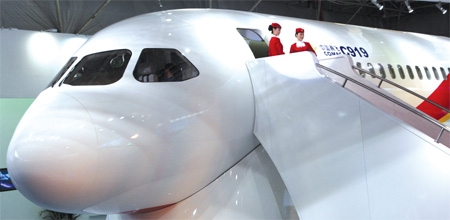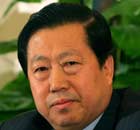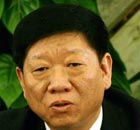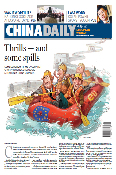Why 4 percent is controversial
Updated: 2010-11-29 09:22
By Shi Jiaqi (chinadaily.com.cn)
4 percent: a sand castle
The indicative guideline is just like a castle built on sand. When the 20 countries can't agree on many vital things concerning the crisis and the imbalances, any attempt to force numerical guidelines on them is doomed to fail.
Divergence one: What are the root causes of the financial crisis?
America underscores the macro-economic imbalances, blaming China's "artificial manipulation" of the exchange rate of the RMB for the accumulation of the global imbalances and the final outbreak of the financial crisis.
China retorts that America pushed the world to crisis with the unrestricted swelling of its virtual economy and a lax regulation system.
Many members, including France and the four BRIC countries, point to the fundamental defects of the international monetary system, saying that America is abusing the US dollar's central role in the system by carelessly printing money to finance its irrationally expanding consumption needs.
Divergence two: What do the current account surplus or deficit mean?
As mentioned above, Germany sees its surplus as an indication of its global competitiveness. This applies to Japan, too. However, China is a different story.
China's trade surplus is mainly generated by direct foreign investments. This has a two-fold meaning. First, most of the profits go to the multi-nationals. What the Chinese earn in this process is very little. Second, when the exports held by foreign companies or joint ventures are excluded, China's current account surplus may even turn into a deficit. Therefore, China's "huge" trade surplus only reflects its global "cost competitiveness," which puts it in a far more vulnerable position than the independent exporters (such as Germany and Japan) in the face of exchange rate adjustment or imposition of a numerical target.
On the other hand, does America's huge deficit symbolize its weakness in the global competition? Well, this is tricky. For the reserve currency issuer, running a large external deficit is, in fact, its advantage, not necessarily a nightmare.
Divergence three: What are the global imbalances?
When America talks about the global imbalances, it refers almost exclusively to external economic imbalances, especially the current account imbalances. Even the financial account imbalances are not on its radar.
However, many emerging economies and developing countries think the global imbalances are, in essence, the unbalanced development across the world. The tide of globalization, which has engulfed the whole world for the last 30-plus years, has increased instead of reducing the gap between the rich and poor countries. The emerging economies and developing countries have been increasingly degraded as the raw material suppliers, the processing factories and the capital playground for the rich countries. What they want from the correction of the global imbalances is more development space and a level playing field for fair competition.
For China, the battle with America has very unique features. Besides the huge differences in their economic structures, demographic trends, development stages, there are many artificial reasons for the persisting trade imbalances between them. For example, China proposes to reduce its trade surplus with America by purchasing high-technology products from the latter, but America seems to be more willing to play with abstract economic terms, such as saving and investment rates.
There is also a problem of "trust imbalances" between them. While China adopts an open and positive attitude toward America's investments at home, America often invokes "national security" reasons to turn down Chinese companies' buyout offers. The biggest imbalances in this regard are in the financial sector.
While China is willing to buy and hold US government bonds on a large scale even after the outbreak of the financial crisis, which fully reflects its confidence in the US economic prospect and the future of Sino-US relations, America is still and even more suspicious of China's "real intention."
Given the above analysis, it is very hard to believe that a set of indicative guidelines can act as a magic panacea to cure all these pains.
Paper's Digest

Chinese jet takes on Big 2
First large commercial plane set to ride on demand for aircraft as economy grows.
Super-CPU only for domestic eyes
Specials

Gaining ground
Doing business in china for westerners has come a long way, Peter batey says.

Safeguarding environment a priority
China continues to face mounting pressure to curb environmental degradation, despite progress in reducing pollution over the last five years, the environmental protection minister warned.

Employment to remain a continuing challenge
China's top labor official said the country will face a tough employment situation in the next five years.
